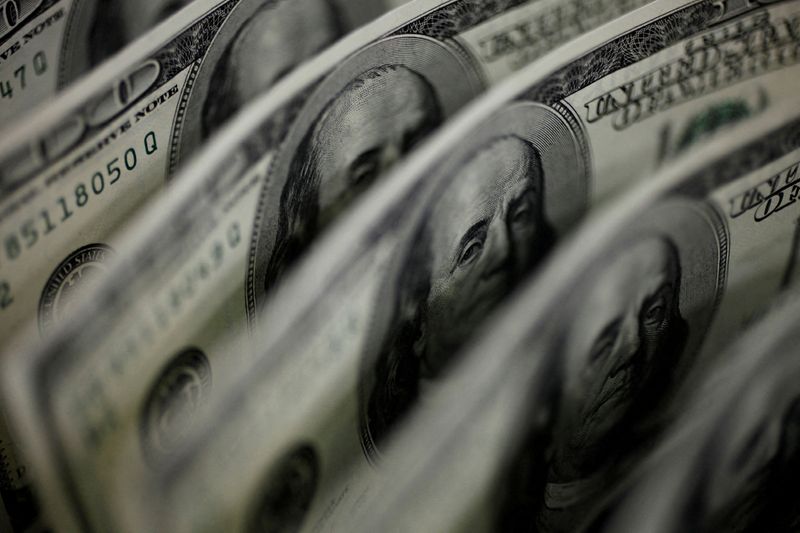Dollar firm ahead of global inflation data
2024.05.27 04:00
By Tom Westbrook
SINGAPORE (Reuters) -The dollar made a steady start to the week on Monday, as investors were focused on U.S., European and Japanese inflation data to guide the global interest rate outlook.
Foreign exchange trade has been dominated by the hunt for “carry” in recent months, punishing low-rate currencies and supporting the dollar while U.S. data has blown hot and cold and dented policymakers’ confidence on the rates outlook.
Several major pairs have hugged tight ranges. The euro, which gained 0.9% on the dollar last week, was in the middle of a range it has held for more than a year at $1.0846.
Trading on Monday was thinned by holidays in Britain and the United States.
German inflation on Wednesday and euro zone readings on Friday will be watched for confirmation of a European rate cut that traders have pencilled in for next week.
Sterling was testing the top side of a range it has held this year at $1.2735. The Australian and New Zealand dollars have eased from recent highs, leaving the at $0.6637 and the at $0.6122 as markets have dialled back interest rate cut expectations for the U.S.
Friday’s reading for the core personal consumption expenditures price index, the Federal Reserve’s preferred inflation measure is expected to be steady month-on-month.
The dollar had fallen back after data showed a slowdown in consumer price rises in April and confirming the trend could pull it lower still – but the big picture is that inflation and inflation indicators remain above the Fed’s 2% target.
“Reaching the 2% inflation goal seems further away than late last year, and several softer inflation readings are needed to restore confidence,” said analysts at Societe Generale (OTC:).
CARRY ON
While the rates uncertainty persists, investors have been chasing income and selling low yield currencies such as the yen, yuan and Swiss franc against the euro and the dollar.
The Swiss franc has been falling all year and at 0.9928 francs per euro touched the lowest since April 2023 last week. finished last week weaker than 7.24 per dollar, its lowest level since early May.
The yen may seal its first monthly gain of the year this month thanks to suspected intervention from Japanese authorities towards the end of April and at the start of May, but it has been slipping back since then.
It was steady at 156.87 to the dollar on Monday but has won little support from rising Japanese government bond yields – at the 10-year tenor, for example, they remain nearly 350 basis points below U.S. yields.
Tokyo CPI, due on Friday, is a reliable guide to the national trend and will be closely watched. Finance ministry data on Friday will also reveal the size of Japan’s intervention.
The U.S. move to shorten equity-market settlement from two days to one is another factor to watch in currency trade this week as dealers expect it may drive trade into the quiet early mornings in Asia.
“Asia-based investors will only have a few hours to aggregate funding requirements, process trade-related FX instructions and manage the execution,” said Lloyd Rees, global custody product lead for Asia and the Middle East at BNY Mellon (NYSE:).
In cryptocurrency markets, ether closed out its largest weekly rise in nearly three years after a surprise approval for some U.S. exchange-traded fund (ETF) applications.

Further approvals remain necessary before launch, but the price of the second-biggest cryptocurrency by market value rose 25% against the dollar last week and another 5% to $3,938 in Asia trade on Monday.
“A month ago, many people would’ve put the likelihood of an ETH ETF low or far out in the future,” said Justin D’Anethan, head of partnerships at digital assets market maker Keyrock.








